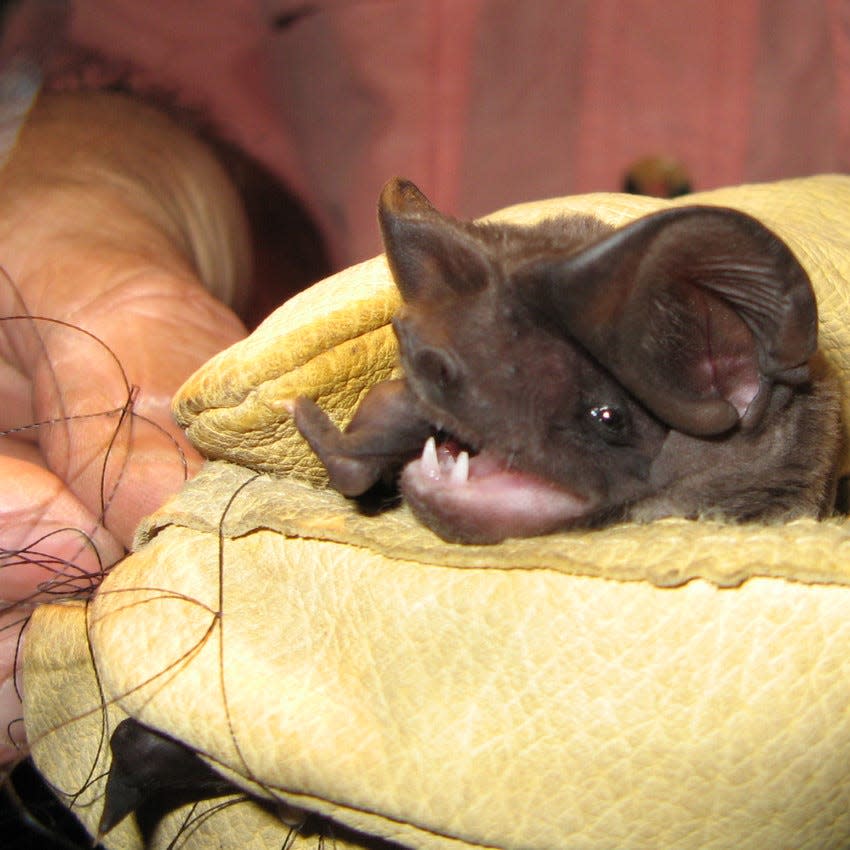Feds designate 13 Florida counties as critical habitat for nation's most endangered bat
A federal wildlife agency set aside a 13-county area at the tip of south Florida as critical habitat for the most endangered bat in the nation.
The U.S. Fish and Wildlife Service last month finalized the habitat boundaries for the Florida bonneted bat, which includes Charlotte, Collier, DeSoto, Glades, Hardee, Hendry, Highlands, Lee, Miami-Dade, Monroe, Okeechobee, Osceola and Polk counties.
"It provides safeguards to ensure federal actions won’t destroy the habitat," said Elise Bennett, an attorney for the Center for Biological Diversity, one of several groups that petitioned the FWS to set aside habitat for the bat. "(And) it raises awareness about the habitat needs of the bat, focuses conservation efforts, and informs the public which specific areas are most important to a species’ conservation and recovery."

Florida is home to more than a dozen species of bats, but the bonneted bat (Eumops floridanusis) is the largest and most endangered.
The bat was listed as endangered in 2013, but the agency did not designate critical habitat for the species at the time.
Several environmental groups, including the Center, filed lawsuits against FWS in 2018 and 2022 over failure to designate critical bonneted bat habitat.
“The designation of critical habitat for the Florida bonneted bat is a science-based decision that will help move this endangered species toward recovery,” said regional FWS director Mike Oetker. “We relied on information provided by multiple agencies, Tribal Nations, experts, organizations, and others to make this decision."
Endangered bat only found at 11 locations in Florida
A tropical species that prefers to nest in mature pine trees and cypress canopies, bonneted bats in Florida consist of 26 known colonies at 11 locations.
Major threats to the Florida bonneted bat include the spraying of pesticides, habitat loss and climate change.
Once thought extinct, the bat lives mostly in rural preserve areas like rural eastern Collier County and the western edge of Miami-Dade.
"Even though the bat has been listed as endangered since 2013, prior to this designation, there were no meaningful protections in places for these important areas of habitat," Bennett said. "Habitat loss is one of the greatest drivers of extinction for many species, including the bat. So having habitat protections is particularly meaningful for the Florida bonneted bat’s survival and recovery."
Mylea Bayless, chief of strategic partnerships at Bat Conservation International, said the species lives in small groups in relatively isolated areas.
"They need large dark open spaces to feed," she said. "They live (roost) in tree cavities, artificial roosts that are constructed specifically for them, and sometimes in Spanish tiled roofs of two-story buildings. They live in small groups, typically less than a dozen bats at a time, unlike the larger colonies of common Brazilian free-tailed bats that people are more familiar with."
Connect with this reporter: Chad Gillis on Facebook.
This article originally appeared on Fort Myers News-Press: Feds set aside habitat in Florida for nation's most endangered bat

